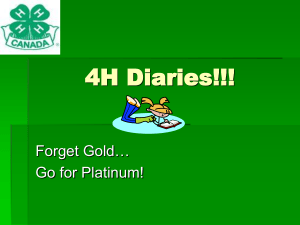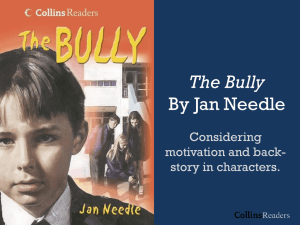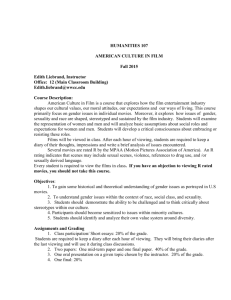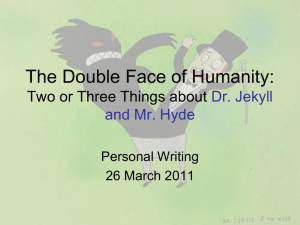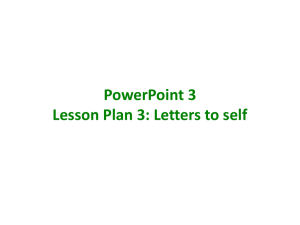Documents and Diaries
advertisement
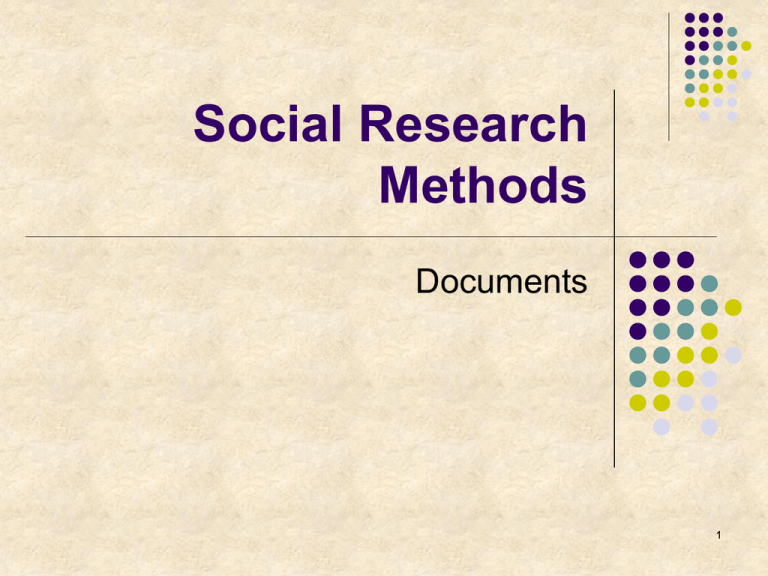
Social Research Methods Documents 1 Classic works Classic works in sociology based on documents (e.g. Marx, Weber, Durkheim) 2 References Prior, Lindsay. 2003. Using Documents in Social Research. London: Sage Publications Ltd. Rapley, Tim. 2008. Doing Conversation, Discourse and Document Analysis. Los Angeles ; London: SAGE Publications. Scott, John C. 1990. A Matter of Record: Documentary Sources in Social Research. Cambridge: Polity Press. Mcculloch, Gary. 2004. Documentary Research: In Education, History and the Social Sciences. New edition. London: Routledge. Hodson, Randy Dale (Ed.) (1999) Analyzing Documentary Accounts, London: Sage Publications Ltd. 3 Proximate and Mediate access to data SCOTT distinguishes: Proximate Mediate Research has direct access to data provider, can influence process of data collection or data generation. no direct access, relies on data providers having left “traces” for other reasons. Researcher cannot influence data collection process Cf. obtrusive vs. unobtrusive measures 4 Material vs. Texts Scott also distinguishes Material traces (e.g. archaeology) vs. texts left. Latter is main focus of documentary research (But N.B. film and video) 5 Examples of documentary sources Manuscripts Letters and diaries Autobiographies Acts of Parliament Government reports and Inquiries Hansard Public records Newspapers, magazines (N.B. now on CD-ROM) Pamphlets Web pages Online discussion groups Accounts (financial) Minutes, memos Returns Surveys/censuses Adverts Handbills Invoices Photographs ?Maps, paintings, films, architecture 6 Classification of documents (following Scott) Access Closed Restricted Open-archival Open-published Authorship Personal Official-private (e.g. hospitals, schools, business) Official-State (e.g. government, intergovernmental) 7 Four Research issues Key point: documents are socially produced. 8 1. Who is the ‘true’ author? Is it a forgery? Authenticity e.g. 6 Haydn piano sonatas authenticated by H C Robbins-Langdon but found this year to be forgeries e.g. the Vinland Map (discovered as forgery in 1974) e.g. Carlos Casteneda - Amerindian magician. Clever compilation from known ethnographies Satires False attribution Particularly an issue on the Internet 9 2. Credibility Sincerity, accuracy. Material interests of Author -> their motives E.g. interests, bribery, sympathies, eye witness or secondary. Atkinson and Coffey - Documentary Realities An ontological status, the ‘official view’ 10 3. Representativeness Survival and Availability (selective deposit) Not everything recorded – history from the victor’s perspective, only what people at the time consider important. Not all docs survive, – weeding, accident, secrecy, scattered. 11 4. Problem of literal meaning e.g. what is a ‘whitster’ Meaning (= either textile bleacher or metal finisher) Genre of document (conventions governing different document types) Stylisation (e.g. use of allegory, allusion & irony) Point of view & Conditions of production (= Hermeneutic circle) 12 Recent focus Semiotics - Internal meanings of document: Barthes Meaning lies in system of rules which structure text. Find these rules and decode hidden meanings of text. Multiple meanings Scott follows Giddens, suggests meaning arises from 2 contexts 1. 2. Intended context Received context. Thus interpretation of document’s internal meaning depends on: Intention and reception. 13 Analysis of documents Quantitative Content Analysis Count terms, phrases, length of texts etc. Qualitative Grounded theory Qualitative Content Analysis Hermeneutic/interpretative 14 Diaries - References Alaszewski, Andrew M. 2006. Using Diaries for Social Research. London: Sage Publications Ltd. Louise Corti (1993) Using diaries in social research. Social Research Update 2. University of Surrey. [http://sru.soc.surrey.ac.uk/SRU2.html] 15 Diaries Personal diaries vs. selfcompletion diaries (structured or free text) Advantages Good for recall of events or easily forgotten experiences (the mundane) Can deal with sensitive data Supplement interviews on day-to-day basis (diary - interview - diary method) 16 Typical suitable subject matter How people spend time (e.g. Multinational Time Budget Use Project) Consumer expenditure (e.g. Family Expenditure Survey -> RPI weightings) Transport (e.g. National Travel Survey) + social networks, health, illness, diet, nutrition, family therapy, crime, alcohol and drug use, accidents. 17 Diary Design A4 booklet 5-20 pages - most respondents do not carry diary around with them Add set of questions asking: Inside cover instructions - "to complete soon after event" (Pilot these) Model of correctly completed diary 1 page for 1 time period (24 hrs/day/week) - clear layout Checklists of items or Guidance on what events need recording Was time period typical? Comments Explanation of any peculiarities Long diary - start short then wean to long Reminders to enter data (bleepers, family, sms) 18 Data Quality Incomplete recording, inadequate recall Diary keeping period Reporting errors Not too short to miss significant events Not too long to burden respondents 7 - 14 days typical Ensure seasonal variations covered 1st day shows more reporting visits to preserve diary keeping habits Literacy Participation Face to face recruitment best Personal collection to sort out problems 19

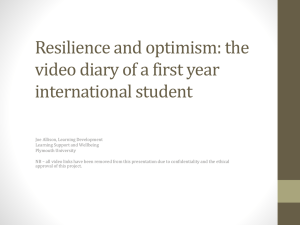

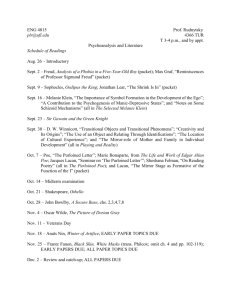
![FWD%20Review[1]](http://s2.studylib.net/store/data/005398137_1-d53fea9dfb8d771a2ec92c1825202857-300x300.png)
